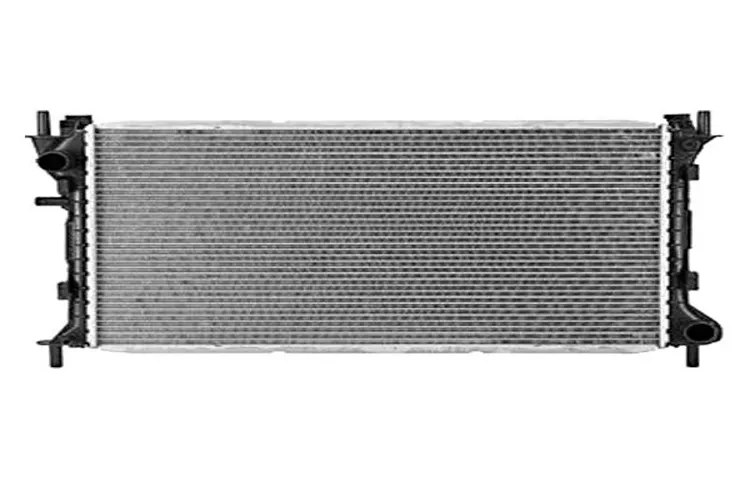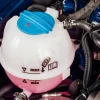Have you ever wondered when to replace engine coolant? Well, no need to worry, as we’ve got you covered. The engine coolant, also known as antifreeze, is a vital fluid that absorbs heat generated by the engine and dissipates it through the radiator. It lubricates internal parts and prevents corrosion.
However, as time goes by, the coolant breaks down and loses its effectiveness. So, how do you know when it’s time to replace it? Think of it like changing the oil – it’s necessary to keep your car running smoothly and prevent costly repairs. In this blog post, we will discuss the signs that indicate it’s time to replace your engine coolant.
Table of Contents
Introduction
Engine coolant is a vital component of a car’s engine, keeping it running at the right temperature and preventing overheating. But like most fluids, it won’t last forever and will need to be replaced over time. So, when do you need to replace the coolant? Well, this depends on several factors, including the type of coolant you use, the age of your vehicle, and the driving conditions.
Generally, most manufacturers recommend replacing engine coolant every 30,000 to 50,000 miles or every two to five years, whichever comes first. However, if you frequently drive in extreme temperatures or in stop-start traffic, you may need to replace your coolant more frequently. It’s always best to check your owner’s manual or consult with a trusted mechanic to determine a proper schedule for replacing your engine coolant.
Neglecting to change your coolant can lead to engine damage, so it’s always better to be safe than sorry.
What is Engine Coolant?
Engine coolant, also known as antifreeze, is a crucial component in maintaining the health and longevity of a vehicle’s engine. It is typically a bright colored liquid that is mixed with water and circulates through the engine to regulate its temperature and prevent it from overheating. The coolant is stored in a radiator, which is positioned at the front of the car and is cooled by air as you drive.
Without proper levels of coolant, the engine would become too hot and risk being damaged or even experiencing a catastrophic failure. So, think of engine coolant as your vehicle’s lifeblood, keeping everything running smoothly and ensuring that your car stays on the road for years to come.
Why is Coolant Important?
Coolant is a vital component of any engine, and its importance cannot be overstressed. It serves to regulate the engine’s temperature, and without it, your car would overheat and quickly become inoperable. The coolant helps maintain a consistent temperature, which allows the engine to perform at its best and also prevents its components from getting damaged.
The key factor to keep in mind is that the coolant system needs to be regularly maintained, or else it can turn into a costly repair. By ensuring that your cooling system has the appropriate amount and quality of coolant, you’re effectively providing your vehicle with a safeguard against costly engine damage.
Signs You Need to Replace Engine Coolant
Knowing when to replace engine coolant is essential to keep your car or truck running smoothly. The coolant in your engine system is responsible for maintaining a stable temperature and protecting the engine from overheating. Over time, coolant can become contaminated with rust and other debris, which can reduce its effectiveness and potentially damage your engine.
One clear sign that it’s time to replace your coolant is if you notice a change in its color or consistency. If the coolant appears cloudy or has a brownish tint, it’s likely time for a change. Additionally, if you smell a strong, sweet odor coming from your engine or notice steam or smoke coming from under the hood, these are often indications of a coolant leak and should be addressed immediately.
Other signs that you may need to replace your engine coolant include unusually high engine temperatures, poor fuel economy, or a reduction in engine power or performance. It’s best to consult your owner’s manual or a certified mechanic to determine the best course of action for replacing your engine coolant.
Mileage Milestones
Replacing engine coolant may not be at the top of your maintenance list, but neglecting it can cause costly damage to your engine. One tell-tale sign that it’s time for a replacement is when your vehicle reaches a mileage milestone. As a general rule, you should replace the coolant every 30,000 to 50,000 miles or every two to five years, whichever comes first.
But if you notice your car overheating or a drop in engine performance, it could be time to replace the coolant sooner. Coolant degrades over time and loses its effectiveness, leaving your engine vulnerable to corrosion and overheating. To avoid expensive repairs, have your coolant checked regularly and replace it as recommended by your manufacturer.
Don’t forget – coolant contains toxic ethylene glycol, so always dispose of it safely and correctly. By keeping an eye on mileage and signs of wear, you can help extend the life of your vehicle and ensure your engine runs smoothly for years to come.
Rusty or Discolored Coolant
Replacing engine coolant is an essential maintenance task that will help ensure your car runs smoothly and avoid costly repairs. One of the telltale signs that you need to replace your coolant is if it appears rusty or discolored. If you notice this, it could be an indication that rust or sediment has accumulated in your engine block, leading to corrosion and poor performance.
You should also check your coolant’s level and consistency to ensure that it is properly mixed and has not been contaminated by oil or other fluids. When replacing your coolant, you should flush your system thoroughly to ensure that all contaminants are removed, and use a high-quality coolant that is recommended for your vehicle. By prioritizing regular coolant replacements, you can help prevent overheating, reduce engine wear and tear, and ensure that your car stays in top condition for longer.
Remember, it’s always better to stay ahead of the game than have to make costly car repairs in the future.
Low Coolant Level
One of the most common signs that you need to replace your engine coolant is a low coolant level. If you notice that your coolant level is consistently dropping, it’s a clear indication that there’s a leak somewhere in your cooling system. This could be due to a variety of issues, such as a damaged radiator, a blown head gasket, or a cracked engine block.
It’s important to address this issue immediately, as running your engine with low coolant levels can cause serious damage and lead to expensive repairs. Keep an eye out for any warning lights on your dashboard and regularly check your coolant levels to ensure that your engine is running smoothly. Remember, prevention is always better than cure!
Leaks or Puddles Under Car
Engine coolant is an essential part of your car’s cooling system. It keeps the engine from overheating by absorbing heat and transferring it to the radiator, where it is dissipated. Leaks or puddles under your car can indicate that it’s time to replace your coolant.
If you notice a green or yellowish fluid pooling beneath your vehicle, it may be a sign that your engine is leaking coolant. It’s important to address this issue promptly because a lack of coolant can cause your engine to overheat and potentially cause severe damage. Another sign of a coolant problem is the appearance of rust or sediment in the coolant reservoir.
If you notice either of these, it may be time to replace your coolant. Rust can damage the engine and lead to expensive repairs, while sediment can clog the radiator and reduce its effectiveness. To prevent these issues, it’s essential to have your coolant system serviced regularly and replace the coolant as recommended by your car’s manufacturer.
You can also check the coolant level and quality yourself by inspecting the reservoir and radiator. If you’re unsure whether your coolant needs to be replaced, a mechanic can perform a coolant flush and replace the old coolant with fresh, clean fluid. In summary, leaks or puddles under your car and the appearance of rust or sediment in the coolant reservoir are signs that you need to replace your engine coolant.
By addressing these issues promptly and servicing your coolant system regularly, you can prevent serious damage to your engine and keep your car running smoothly.
How Often to Replace Engine Coolant
When it comes to maintaining your vehicle, it’s essential to know when to replace engine coolant. Engine coolant, also known as antifreeze, helps regulate the temperature in your engine and prevents it from overheating. The general rule of thumb is to replace your engine coolant every 30,000 to 50,000 miles or every 2 to 3 years, depending on the manufacturer’s recommendations.
However, this can vary depending on the make and model of your vehicle, so it’s essential to consult your owner’s manual or speak with a trusted mechanic to determine the recommended replacement schedule. Neglecting to replace your engine coolant can lead to corrosion, engine damage, and expensive repairs down the line. So, be sure to keep an eye on your miles and schedule your engine coolant replacement accordingly to keep your vehicle running smoothly.
Manufacturer Recommendations
When it comes to keeping your engine running smoothly, engine coolant is an essential component. Over time, your engine coolant can become contaminated and lose its effectiveness, which is why it’s important to replace it regularly. But how often should you replace your engine coolant? Well, the answer to that question varies depending on the manufacturer recommendations for your specific vehicle.
Some manufacturers suggest replacing engine coolant every 30,000 miles, while others recommend changing it every 100,000 miles. Additionally, some manufacturers suggest replacing coolant every two years, while others recommend changing it every five years. To determine the right schedule for your vehicle, consult your owner’s manual or speak with a trusted mechanic.
By staying on top of engine coolant replacements according to manufacturer recommendations, you can prolong the life of your engine and avoid costly repairs down the road.
Climate and Driving Conditions
Engine Coolant, Replacing Coolant, Climate, Driving Conditions One of the most critical components of your vehicle’s cooling system is engine coolant. It serves the purpose of dissipating heat from the engine, keeping it at a safe operating temperature. However, your engine coolant can degrade over time and eventually lose its ability to protect your engine.
So, how often should you replace it? Well, it depends on several factors, such as climate and driving conditions. For example, if you live in a hot and humid area where you regularly encounter stop-and-go traffic, you should replace your coolant every two years or 30,000 miles, whichever comes first. On the other hand, if you usually drive in mild and less congested conditions, you may get away with replacing your coolant every four years or 60,000 miles.
Regardless of your situation, it’s essential to follow your vehicle manufacturer’s recommended service intervals and regularly check your coolant’s condition and level to ensure optimal engine performance and longevity. In conclusion, replacing your engine coolant at the appropriate intervals can save you thousands of dollars in repairs down the line and prevent unexpected breakdowns. Therefore, don’t overlook it and let qualified technicians handle it for you.
Conclusion
To keep your engine running smoothly and prevent costly repairs down the line, it’s important to recognize when it’s time to replace your engine coolant. Much like a relationship, coolant can start out hot and steamy, but over time it can become stagnant and less effective. So, if you start noticing your coolant losing its color, smelling a little funky, or just not keeping your engine cool like it used to, it’s time to move on and replace that old coolant with a fresh and exciting new formula.
Trust us, your engine will thank you for it!”
FAQs
What is engine coolant?
Engine coolant is a liquid that circulates through your engine to help regulate its temperature.
How often should I replace my engine coolant?
It’s recommended to replace your engine coolant every 2-3 years or 30,000-50,000 miles, whichever comes first.
Can I mix different types of engine coolant?
It’s not recommended to mix different types of engine coolant as they can have different chemical compositions that may cause damage to your engine.
How do I know when to replace my engine coolant?
One sign that it’s time to replace your engine coolant is if it appears dirty or rusty. You may also notice a decrease in performance or a higher engine temperature.
Why is it important to replace engine coolant?
Engine coolant helps regulate your engine temperature and keeps your engine running smoothly. If it’s not replaced regularly, it can cause damage to your engine and lead to costly repairs.
Is it safe to change engine coolant myself?
It’s possible to change engine coolant yourself, but it’s important to follow proper safety precautions and consult your vehicle’s manual for specific instructions.
What happens if I don’t replace my engine coolant?
Over time, old engine coolant can become corrosive and cause damage to your engine. It’s important to replace it regularly to avoid costly repairs and engine damage.



